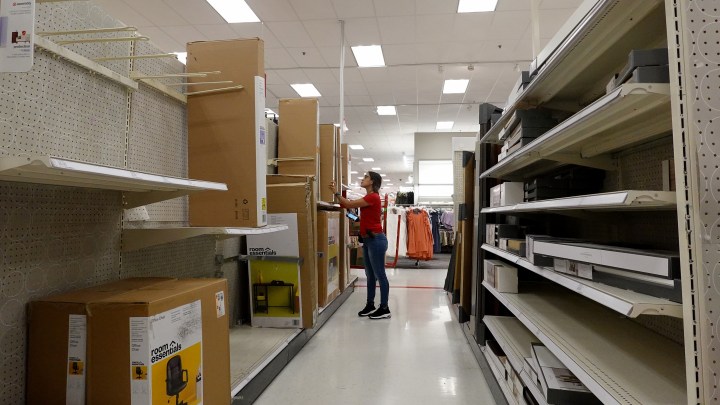
Retailers bulked up their inventories during the worst of the pandemic. Now they’re stuck with them.
Retailers bulked up their inventories during the worst of the pandemic. Now they’re stuck with them.

For the better part of this pandemic, we’ve been telling you about how retailers have been moving from just-in-time inventory management to just-in-case inventory management.
In other words, instead of goods arriving at stores regularly — and consumers snapping them up quickly — retailers have been beefing up their inventories and keeping plenty of goods on hand.
Because who knows when supply chains might snap, or shipping prices might spike even higher than they are already.
This week, we learned that some big retailers are stuck with too much inventory. “Walmart, Target, even through the department store space,” said Steph Wissink, a senior research analyst at Jefferies.
Many of the goods piling up are items consumers had been buying a lot of during the pandemic, like office furniture or home decor.
“Kitchen appliances, things that are on the tabletop or countertop, even things like basic and casual apparel,” Wissink said.
Since the economy has reopened, consumers have been less interested in buying those goods and more interested in spending on services, like going out to eat.
Being stuck with a lot of inventory is not ideal for retailers, said Mickey Chadha, senior credit officer at Moody’s Investors Service.
“When you’re looking at the cost of these items, they’re more expensive. And they take a lot of space to store.”
And that storage is costly too, Chadha said. “You’re paying for inventory, you’re putting it in your warehouse, you have costs associated with that. And so the key is to keep that inventory flowing.”
And that means markdowns — also not ideal for retailers, said Brian Yarbrough, consumer research analyst at Edward Jones.
“Maybe you mark it down 20% off. Maybe it’s 40%, maybe it’s 50%,” he said. “And when you do that, that means your profits get squeezed, and potentially — if you have to mark it down too much — you end up losing money on that product.”
Retailers are stuck with all this extra inventory because they made some lousy forecasts about consumer spending, said Nicole DeHoratius, a professor at the University of Chicago.
“We have a saying that forecasts are always wrong. And I think forecasting, in normal times, forecasting is incredibly hard. And in these times it’s extremely hard,” she said.
Target and Walmart are probably pivoting, DeHoratius said, to stocking more food and other basics.
There’s a lot happening in the world. Through it all, Marketplace is here for you.
You rely on Marketplace to break down the world’s events and tell you how it affects you in a fact-based, approachable way. We rely on your financial support to keep making that possible.
Your donation today powers the independent journalism that you rely on. For just $5/month, you can help sustain Marketplace so we can keep reporting on the things that matter to you.

















